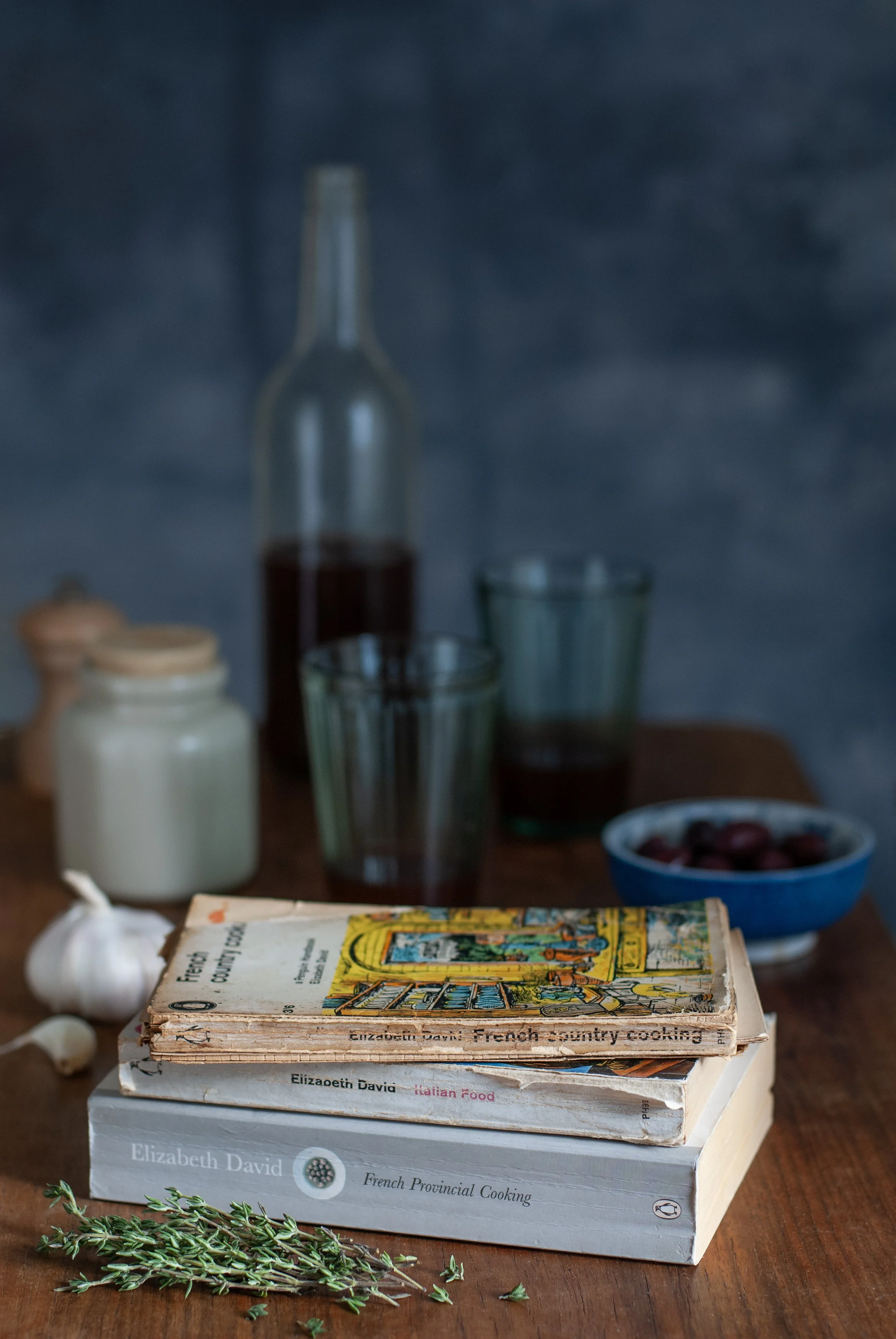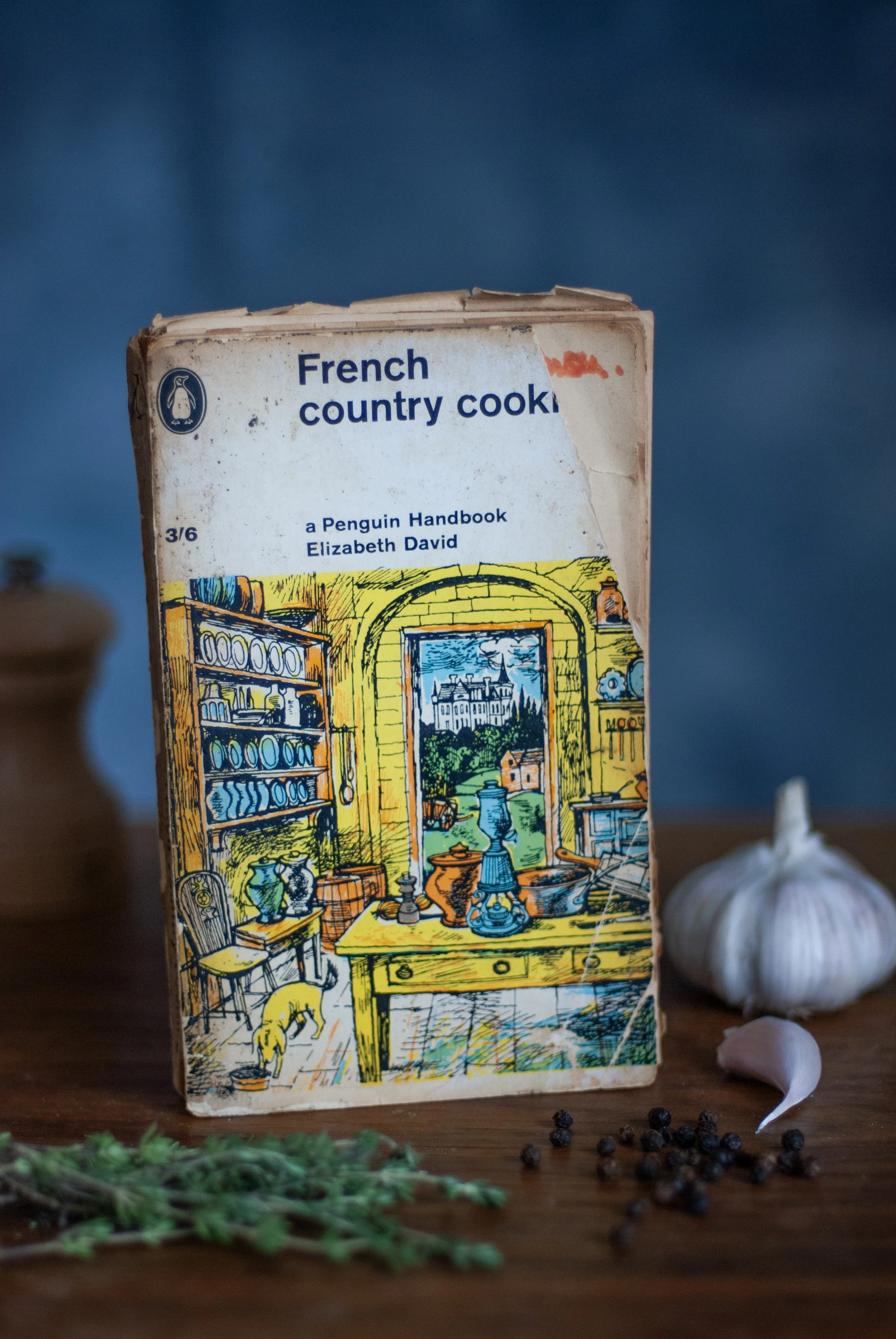elizabeth david
There were always Elizabeth David’s cookery books on the shelf in my childhood kitchen at 33 Ladbroke Grove W11. Mum collected all eight of them as they came out.
Elizabeth David’s fascination with European food was ignited when she went to Paris to study painting in 1930 and took a course in French Civilisation at the Sorbonne. But with hindsight she acknowledged that it was the family with whom she lodged and their mutual delight in simple everyday food that had the greatest influence on her.
Three favourites from Elizabeth David’s eight cookbooks: French Country Cooking, Italian Food and French Provincial Cooking.
The first Elizabeth David recipe I remember making was in honour of Grandpa Lockspeiser, who had come to stay. I embarked with great excitement on the ‘Lasagne Verdi al Forno’ from Italian Food – made, at that time, entirely from scratch and by hand! The instructions read: ‘This paste must be thoroughly kneaded and worked, pushing it away from you … with the palms of the hands’. After about 15 minutes the paste had indeed ‘attained the required elasticity’. So then I turned to rolling out the dough again and again ‘stretching it as you do so round the rolling pin, pulling it thinner and thinner’. By the time it had been rolled and stretched 12 times it was remarkably ‘like a piece of cloth which you can fold or roll up in any way you please without its breaking’. In short, a magical culinary chemistry lesson that I remember to this day. Grandpa was absolutely delighted and impressed! But I see I noted against the recipe ‘use 1/3rd quantity of pasta & x 2 of the ragu b.’.
A few years later, we all went on a family holiday to Lake Trasimeno, in the heart of Umbria. Before we left, I researched which restaurants Elizabeth David had used for her Tuscan and Umbrian recipes. Impressively she had linked up with the High Commissioner for Italian Tourism and was put in touch with Ente del Turismo ‘all over Italy who were so hospitable … often the erudition of the members … led me to discoveries about Italian food and wine which would otherwise have been most difficult, if not impossible, to make’. So, we went to Sabatini’s in Florence and the Trasimeno in Perugia and ate the most divine, simple, local food and drank fabulous wine!
My much-loved, much-used – and now very tattered – copy of French Country Cooking
When I went to live with a friend in Toledo for four months, I chose Elizabeth David’s French Provincial Cookery as one of the two cookery books that I took with me, and read it from cover to cover. Reading her work again for this journal, I realise how prophetic she is:
When it comes to using the recipes, my inclination now is to try harder than ever for quality. A little fine olive oil, or true, clear stock, or double cream from Jersey herds, or a few fresh eggs laid by decently-fed, humanely reared hens go a lot further than twice the amounts of third-rate makeshifts.
She adds:
But recipes alone are not enough. A flourishing tradition of local cookery implies also genuine local products, the cooks and the housewives must be backed up by the dairy farmers … the market gardeners and the fruit growers, otherwise regional cookery simply retreats into the realms of folk-lore.
I explored many of her recipes using wonderful local Toledano produce. One of my favourites is her mousse aux chocolate – a winner, made with the best dark chocolate and the best butter. You can add whipped organic cream separately if you wish (I prefer it that way). The book also includes a recipe for the excellent Niçoise dish, Pissaladière, my version of which is currently in development … watch out for it later this month!
During the 1970s I was lucky enough to play with the then harpsichordist, now pianist Melvyn Tan. He was a friend of Elizabeth David’s and went on picnics with her and her friends. On one such picnic she told Melvyn that she thought that Summer Cooking was her best book. It covers recipes for one season from Britain, France, Greece, Italy, Mauritius, Russia, Spain and Turkey.
In her preface she explained that her aim in writing it was to put:
… emphasis on two aspects of cookery which are increasingly disregarded: the suitability of certain foods to certain times of the year, and the pleasures of eating the vegetables, fruits … in season, therefore at its best, most plentiful, and cheapest.
I couldn’t agree more!


